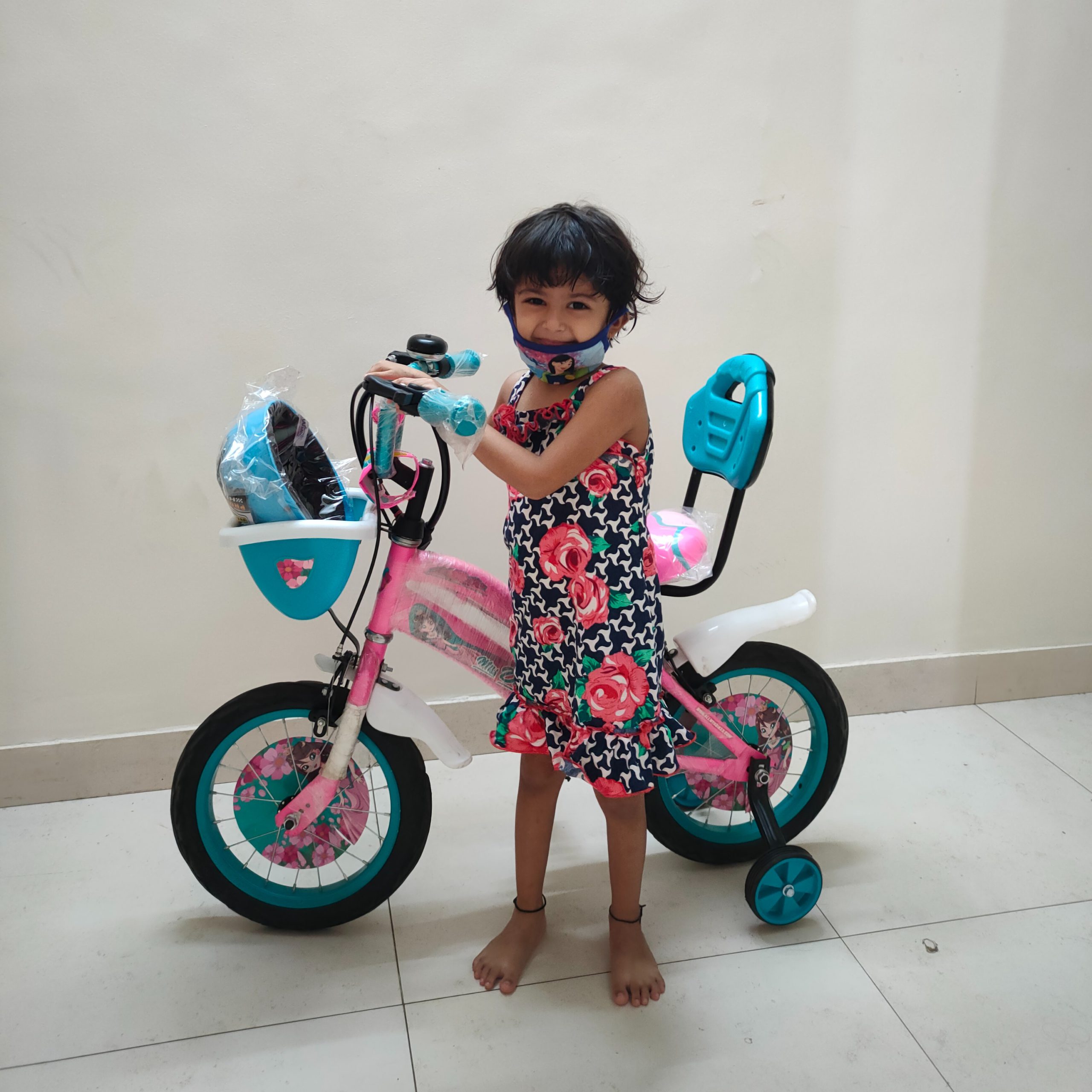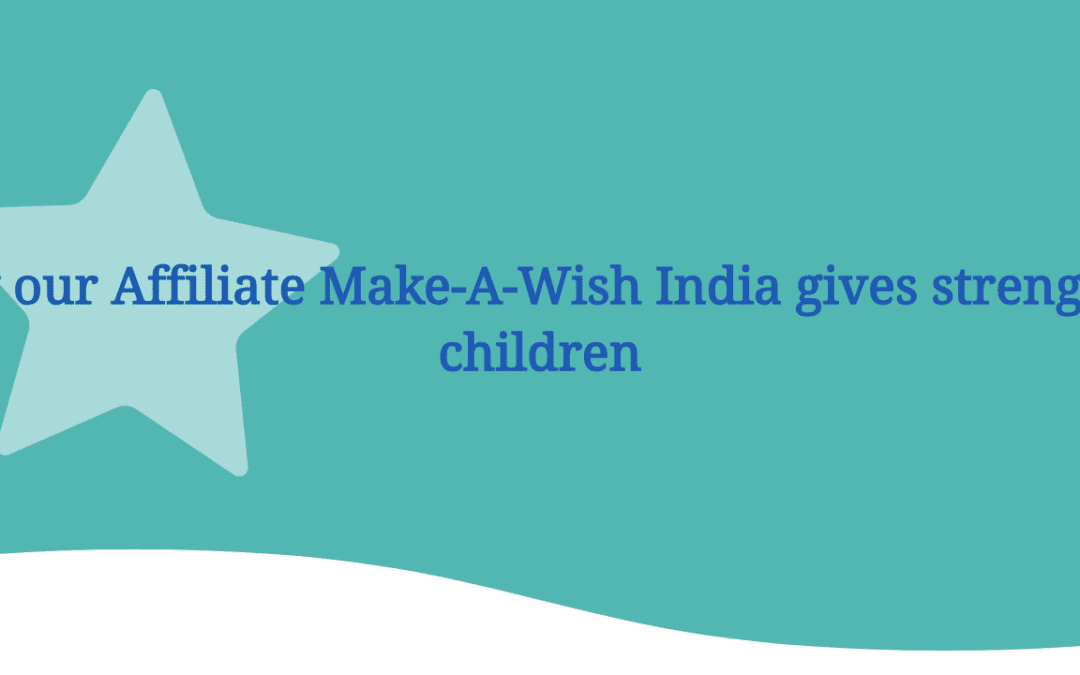Grant life-changing wishes
Make-A-Wish India
Our affiliate in India has had quite a history of making wishes come true. Since 1995 over 70,000 wishes have been granted by Make-A-Wish India. Every day, children in India are diagnosed with a life threatening illness. Being diagnosed with a critical illness has a huge impact on a child and their loved ones.
The childhood of a critically ill child will never be the same. A critically ill child often has to undergo medical procedures and stay in cold hospital rooms for long periods.
When a child lives in a remote village, it sometimes can be hard to reach a hospital where they can receive the needed medical care. At times this forces the family to find a home closer to the hospital.
A diagnosis with a life threatening illness, causes a lot of stress, fear and anxiety in the family. As it has shown that granted wishes can play a positive role in the healing process, Make-A-Wish India continues to grant wishes of every eligible child.
What does Make-A-Wish India do?
A wish journey is magical because a wish is the result of the imagination of a child. By granting wishes, Make-A-Wish India shows critically ill children that even the seemingly impossible, is possible.
Granted wishes build up confidence and resilience in a child. It gives them hope to believe in a better future. During the wish journey the child experiences something extraordinary. A granted wish also makes a difference for the child’s family. It enables them to spend time together and make memories that they can keep close to their hearts.

Give hope to critically ill children by donating
Help grant wishes like Kavisha’s. Learn how you can make a wish come true at our FAQ. Your support gives children renewed strength and hope for the future. Make-A-Wish India relies on the hard work of volunteers, local partners and communities. Donate to Make-A-Wish India and make a difference in the lives of critically ill children and their loved ones.
Grant life-changing wishes

What are examples of wish journeys crafted by Make-A-Wish India?
Make-A-Wish India understands how fear and anxiety can be overwhelming for parents and children experiencing critical illness. To keep children motivated and to give them strength in facing the recovery process, we try our best to make these children feel at ease. An Example is Kavisha’s story. Kavisha is a 3-year-old child living with leukemia. Every time she visits the hospital with her mother, she asks to leave as soon as possible. However, Kavisha’s dream was to have a bicycle. By providing her own bicycle, we were able to develop a sense of independence.What stages does the wish journey of Make-A-Wish India go through?
The wish has to go through a number of stages before it can be fulfilled. The first stage is to identify and understand a child’s wish. As soon as that’s done, every child is given a coin as a token of promise that their wish will be fulfilled. Considering the limitless possibilities of a child’s imagination, we try our best to accommodate them in the best way possible. Allowing the child to anticipate the fulfillment of their wish is almost as good as the wish itself as it creates such curiosity and excitement. The final step on the list is actually actually granting the child their wish.Which eligibility criteria does Make-A-Wish India follow?
Our Affiliate Make-A-Wish India follows the same guidelines as other affiliates. The child must be aged between 3 and 17 years (inclusive) and must be living with a critical illness. Children can be referred by medical professionals treating the child, by a parent or legal guardian, by family members with a detailed knowledge of the child’s medical condition or by the child themselves. Make-A-Wish India is a non-profit organization, and relies mainly on donations in order to continue to grant wishes to children living with a critical illness. With your help, our Affiliate will be able to put a smile on the faces of these children.Where can I make a donation to Make-A-Wish India?
Our Affiliate Make-a-Wish India is a non-profit organization that depends on your donations. By donating generously to a greater cause, you make it possible for them to grant the wishes of countless children living with a critical illness. A child being diagnosed with a critical illness is among the worst experiences for the child and their parents, and they can find their life lacking the joy and hope it once had. The main aim of the provision of these wishes is to restore the lost joy and hope within the hearts of these children and to allow them to experience life beyond illness. The sense of happiness achieved as a result of these wishes brings strength to the child in their treatment journey.Sixtine Tabard, Digital Marketing Manager at Make-A-Wish International, joined the organization at the beginning of 2025. With over 9 years of digital marketing & analytics experience in e-commerce, she brings a wealth of expertise. Sixtine is responsible for the website content and SEO, and supports new affiliates in setting up their own website. Additionally, she manages the digital analytics side of the website to improve its efficiency and ensure a smooth donation process for all Make-A-Wish supporters.
We believe in transparency and accuracy. Read more in our editorial guidelines.

